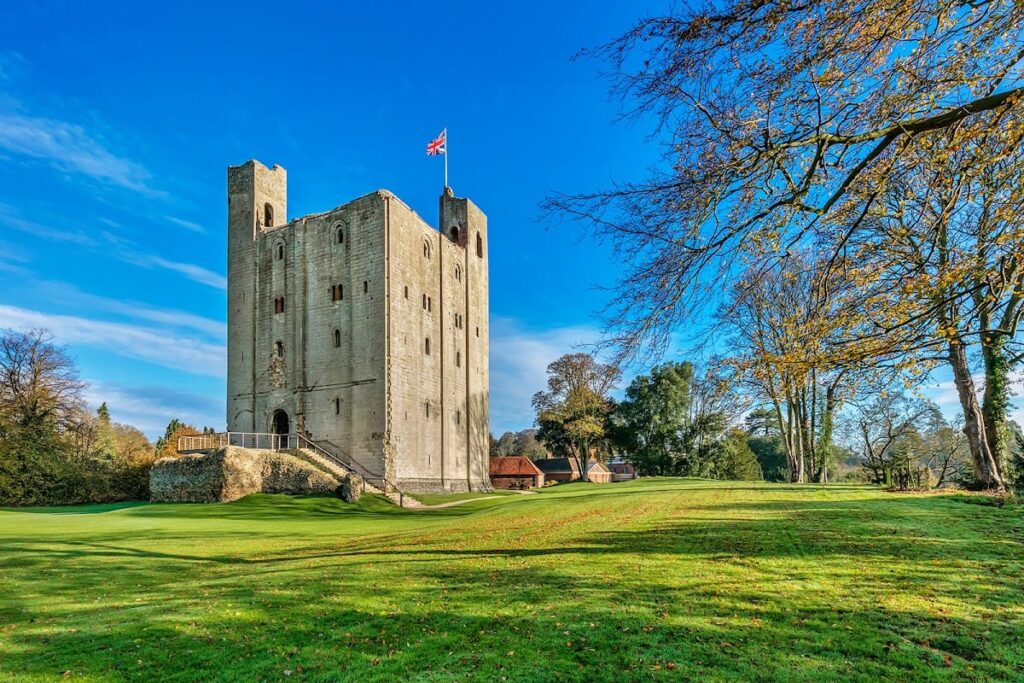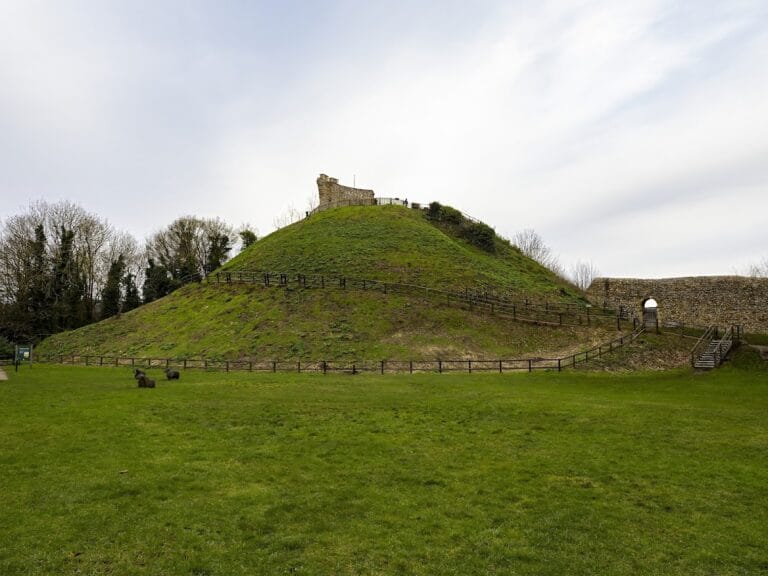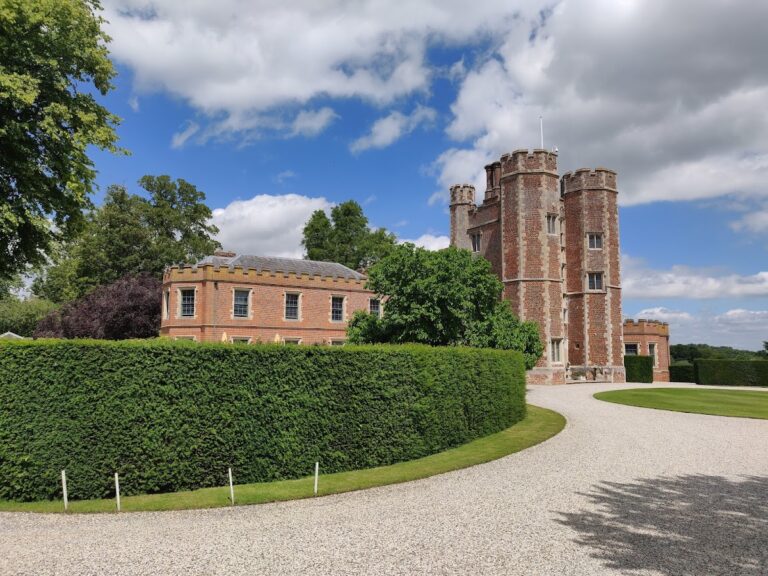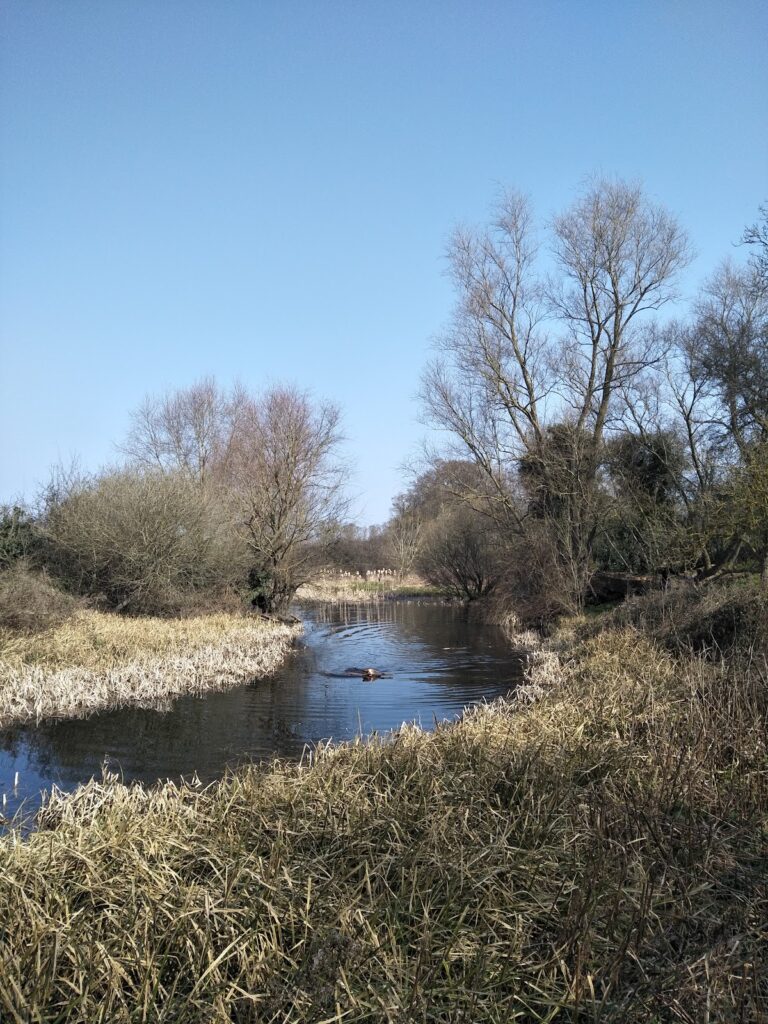Hedingham Castle: A Norman Stronghold in the United Kingdom
Visitor Information
Google Rating: 4.6
Popularity: Medium
Google Maps: View on Google Maps
Official Website: www.hedinghamcastle.co.uk
Country: United Kingdom
Civilization: Medieval European
Remains: Military
History
Hedingham Castle is located in Castle Hedingham, United Kingdom, and was constructed by the Norman de Vere family following the Norman Conquest. The manor of Hedingham was granted to Aubrey de Vere I by William the Conqueror by the year 1086, marking the beginning of the castle’s association with this influential lineage.
The castle’s main stone keep was built during the 1130s and 1140s, establishing a stronghold for the de Vere barony. Aubrey de Vere II held the position of master chamberlain of England from 1133, and his son, Aubrey III, was elevated to the title of Earl of Oxford in 1141 by Empress Matilda during the period of civil conflict known as The Anarchy. Throughout the medieval era, Hedingham Castle served as the family seat of the Earls of Oxford, symbolizing their status and authority.
During the early 13th century, the castle experienced military action in the First Barons’ War. It was besieged twice, in 1216 and again in 1217. Both sieges were relatively brief and ended with the attackers successfully gaining control, reflecting the turbulent political climate of the time. Despite these interruptions, the de Vere family retained ownership for most of the castle’s history.
The Wars of the Roses in the 15th century brought a temporary change in ownership. In 1462, the castle was confiscated and granted to Richard, Duke of Gloucester, who later became King Richard III. It passed through several hands before being restored to the de Vere family in 1485 by Henry VII, marking the return of the castle to its traditional custodians.
In the early 18th century, the estate changed hands when William Ashhurst, a Member of Parliament and former Lord Mayor of London, purchased it. Between 1693 and 1719, Ashhurst commissioned the construction of a red-brick mansion in the Queen Anne style within the outer bailey, reflecting architectural tastes of the period. The property remained with the Majendie family for approximately 250 years before passing back to descendants of the de Vere family during the 20th century.
Remains
The most prominent surviving feature of Hedingham Castle is its Norman stone keep, a nearly square tower measuring roughly 53 feet on its east and west sides and about 58 feet on the north and south sides. Rising over 70 feet tall, the keep’s walls are exceptionally thick, approximately 11 feet at the base and around 10 feet near the top. Constructed from flint rubble bound with lime mortar, the exterior is unusually faced with finely cut ashlar stone brought from a quarry in Barnack, Northamptonshire, demonstrating the considerable effort invested in its construction.
Originally, the keep was crowned by four corner turrets, but two of these were removed, likely during the Tudor period when stone was repurposed for building projects commissioned by Henry VII. Inside, the keep contains five floors, including a Great Hall or Banqueting Hall featuring a large fireplace and a distinctive central two-storey arch. The uppermost floor may have been added in the 15th century, replacing an earlier pyramid-shaped roof, though this alteration remains a subject of scholarly discussion.
Surrounding the keep was a large ditch carved into a natural spur, forming a ringwork and an inner bailey. Extending southward from this was an outer bailey that reached into the valley and the area now occupied by the modern village. While many Tudor-era outer buildings such as the hall and drawbridge have not survived, a red-brick four-span bridge connecting the inner and outer baileys dates from the late 15th or early 16th century. This bridge has undergone several restorations and remains a notable feature of the site.
Within the inner bailey, south of the keep, there once stood a chapel, indicating the presence of religious facilities within the castle complex. The Queen Anne style mansion built around 1700 by Sir William Ashhurst occupies the outer bailey and is constructed of red brick, reflecting the architectural style of its time.
Today, the Norman keep stands in excellent condition, preserving much of its original form and structure. The castle grounds continue to reflect the layered history of the site, from its medieval origins through Tudor modifications and later Georgian additions.










